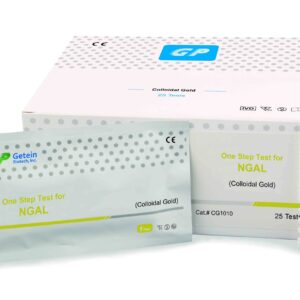Description
Albumin is one of the major plasma proteins. In normal circumstances, albumin molecules are too large to cross the glomerular basement membrane. Therefore, albumin is usually present in very low concentration in urine. Damage to the glomerular basement membrane can alter its permeability.
Albumin is then able to enter the urine. Sustained elevation of urinary albumin concentration is called Microalbuminuria (mAlb). mAlb arises from increased leakage of glomerular basement membrane. So, mAll is recognized as a marker of kidney damage.
Recent years, determination of mAlb is linked with increased risk for cardiovascular events rather than progression to end-stage kidney disease. It is a valuable tool for the detection of cardiovascular risk in diabetic nephropathy. Early detection of microalbuminuria in diabetes is critical because immediate intervention can slow the progression of disease. The epidemiology of microalbuminuria reveals a close association between systemic endothelial dysfunction and vascular disease, also implicating glomerular endothelial dysfunction in microalbuminuria.





